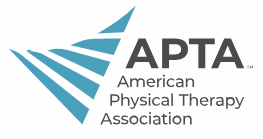Elevated Resting Pulse Pressure and Blood Pressure in Patients Receiving Outpatient Physical Therapy
Elevated Resting Pulse Pressure and Blood Pressure in Patients Receiving Outpatient Physical Therapy
Purpose: To examine pulse pressures (PP) and blood pressures (Systolic-SBP and diastolic-DBP) in 98 patients arriving for outpatient physical therapy and determine if the distribution differed across risk classes. To determine if right (R) and left (L) arm PP differed from normal. To determine if medication affected SBP, DBP, or PP within the sample.
Background/Significance:
For adults > 60 yrs, a PP > 60 mmHg is a stronger predictor of cardiovascular morbidity than SBP alone. PP is a useful predictor of myocardial infarction and/or may be suggestive of carotid artery stiffness, valvular regurgitation, anemia, or hyperthyroidism. Physical Therapists should regularly measure PP and cautiously treat patients with elevated SBP, DPB, or PP.
Subjects:
Forty male and 58 female subjects, 65.98 ± 4.19 in, 180.91 ± 39.62 lbs., with a BMI of 29.11 ± 5.86 and a mean age of 64.34 ± 15.92 yrs participated.
Methods and Materials:
Ss sat resting (10-min) and SBP/DBP was measured bilaterally and classified (ACC/AHA 2017 Guidelines) as normal (<120/<80mmHg); elevated (120-129/<80mmHg); Stage 1 (130-139 or DBP 80-89mmHg); Stage 2 (≥140/≥90mmHg), or Hypertensive crisis (>180/>120mmHg). The normal pulse pressure (SBP-DBP) cut-point was set at (< 60mmHg).
Analyses:
A Chi-Square tested for differences across the 5 BP classes. One-sample t-tests were calculated for R and L PP (population value=60mmHg). A 1-way ANOVA tested the effects of medication (none vs. taking Rx) on R and L SBP, DBP, and PP. Statistical significance was set at p <0.05.
Results:
Mean R and L BPs were: 132.93 ± 15.81mmHg/76.32 ±-8.85mmHg and 132.23 ±15.69/76.36 ±10.17 mmHg, respectively. Only 18.56% and 20.62% R and L arm SBP values and 54.64% and 61.86% of R and L DBP values, respectively were normal. R and L SBP were classified as elevated (25.8; 22.4%), stage 1 (20.6; 22.4%), stage 2 (34.0, 30.6%) and crisis (1, 1%), respectively. R and L DBP were classified as elevated (11.2%; 15.3%), stage 1 (23.5; 25.5%), and stage 2 (9.2%; 9.5%), respectively. While most Ss had normal DBP, 26.3% of L and 23.5% of R measures were classified as Stage 1 HTN and Stage 2 HTN, respectively. Chi-Square tests found a significant deviation (p<0.05) from hypothesized values for R and L SBP (X2(4)=28.72; X2 (4)=24.42) and R and L DBP (X2(4)=53.39; (X2=(4)=33.30), respectively. Mean R and L PPs were: 56.61 ± 14.47 mmHg and 55.87±1 15.26mmHg, respectively. Normal PP was noted in 60.8% and 61.1% of R and L arms, respectively. One-sample t-tests for R (t(96-=2.308. p=.02) and L (t(94)=-2.635 p=.01) PP were statistically different than 60 mmHg. No significant effect (Lambda(4,86) = .186, p>.05) was found via the 0ne-way MANOVA testing the effect of medication on BP classes or PP. Fifty-six percent of Ss reported taking medications for HTN but approximately 80%, 42%, and 38.5% of Ss had high systolic, diastolic and PP, respectively.
Conclusions:
A very high percentage of physical therapy outpatients had elevated PP (38.2%) and BP (79%) regardless of medication. This information should give physical therapists even more incentive to regularly check PP and BP in the outpatient setting and communicate with PCPs to enhance blood pressure control.



